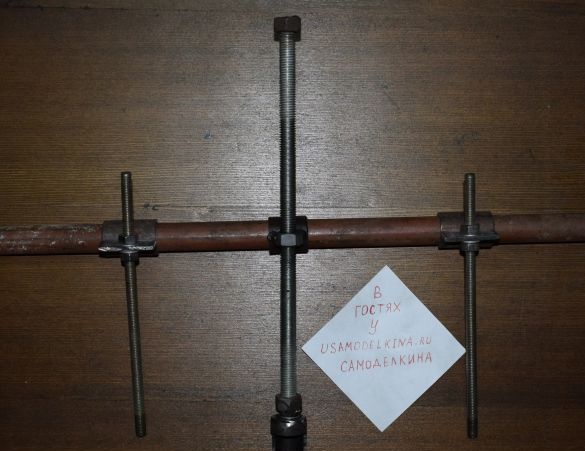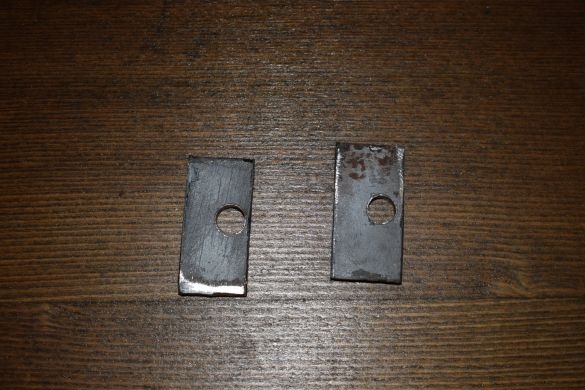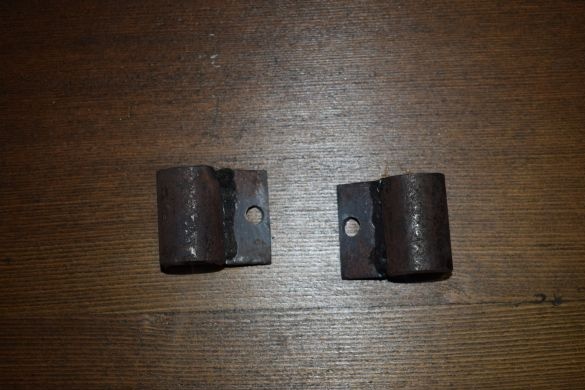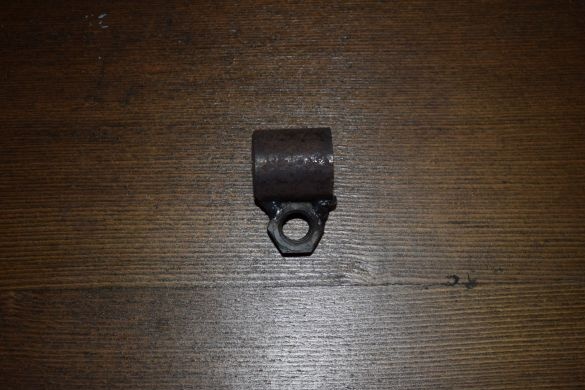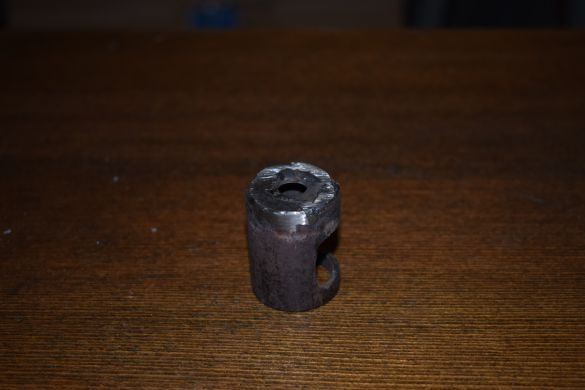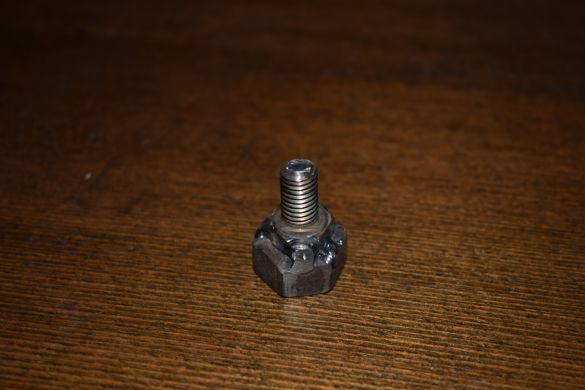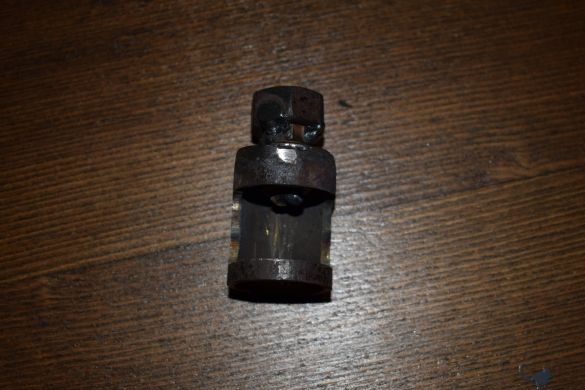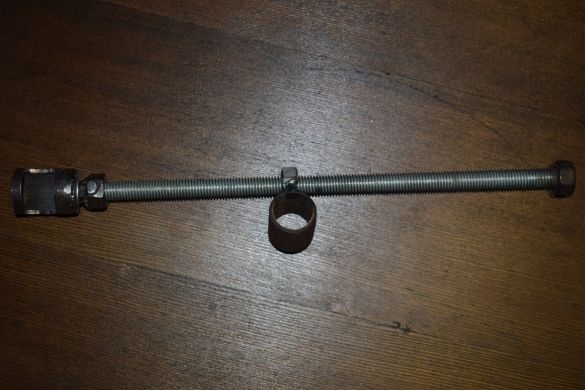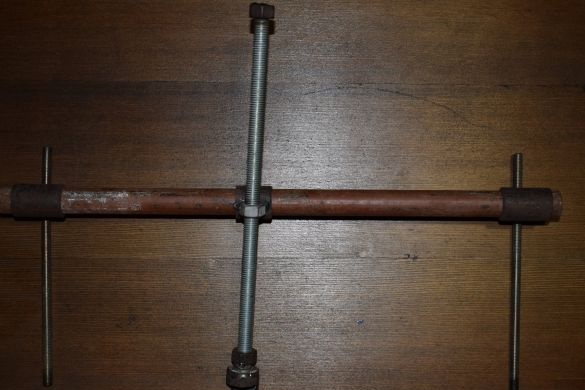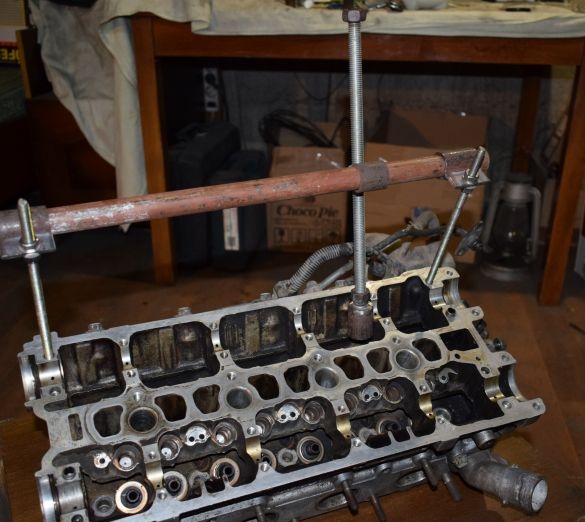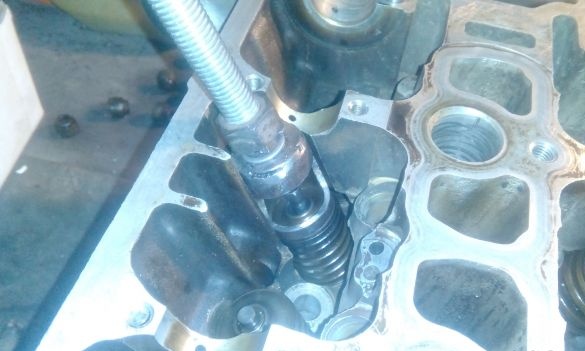Today I will show my version of a very necessary tool when repairing an engine, this is a valve drier. When repairing the cylinder head, you can’t do without a dry oven. If you can disassemble it with improvised tools, using a hammer and tube, then it will not work to assemble in the same way. Although some craftsmen cope with this task with a wrench, I can not imagine how.
To build a dry oven, I need:
Materials:
- iron pipe D20 mm. about 40 cm. and D25 mm about 20 cm.
- two 8 mm studs.
- one stud per 14 mm.
- piece of strip 4 x 40 mm.
- nuts, washers, 8 mm engravers.
- 8 mm bolt.
- 14 mm nuts.
- grease
Tool:
- welding machine, electrodes
- Angle grinder (grinder)
- spanners
- pliers
- hammer
- and most importantly, good mood and straight arms.
And so let's get started. First you need to cut two 40 mm tubes from the D25 pipe. (I did not find such a pipe at home, so I took the drives, they were). If there are droplets from welding along the seam in the pipe, they must be grinded off. You also need to remove the burrs at the cut site. A D20 pipe will be inserted into these tubes.
Now from a strip of 4 x 40 mm. I cut two pieces of size 20 x 40 mm. Drill holes of 8 mm in these plates.
I weld these plates to the pipe D25. and set aside, let it cool.
Next I will need another D25 tube measuring 20 mm. It also needs to be treated with burrs and welding droplets from the inside. A 14 mm nut must be welded to it.
Again I take a pipe of D25 mm. from it you need to cut a piece of 8 centimeters (I got less). This pipe will abut against the spring and compress. Therefore, it’s better to make it bigger, it will be more convenient to install “crackers”. I cut out a “window” in it.
I weld an enlarged washer by 8 mm to it.
I weld a bolt to 8 on a 14 nut, strictly perpendicular. I took a too long bolt, the extra had to be cut off.
Now I collect this node as in the photo below.
Install the washers on both sides. I tighten the nut so that the tube can rotate freely. I fix the nut by welding.
This compound is anointed with oil for better gliding.
On a hairpin of 14 mm. screwed the nut and welded it. I collect.
Here's what happened.
The result was such a dry cakes. Minimum parts, maximum benefits.
Now you need to install and check how it works. For installation, you need to screw with 8 mm studs. into existing holes in the head. Point the cooker to the installed spring and turn the pin clockwise with the key. Thus compressing the spring. After installing the “crackers”, unscrew and move to the next valve and so on all 16 valves.
Conclusion
Here is such a necessary and not difficult to manufacture tool I did. I used this cooker to repair the cylinder head of the 4G93 engine in Mitsubishi Legnum. I think it will come in handy when repairing other engines, and if it doesn't, in the garage There are always pieces of iron, a welding machine to modify. I hope you enjoyed this article, and homemade will be helpful.


